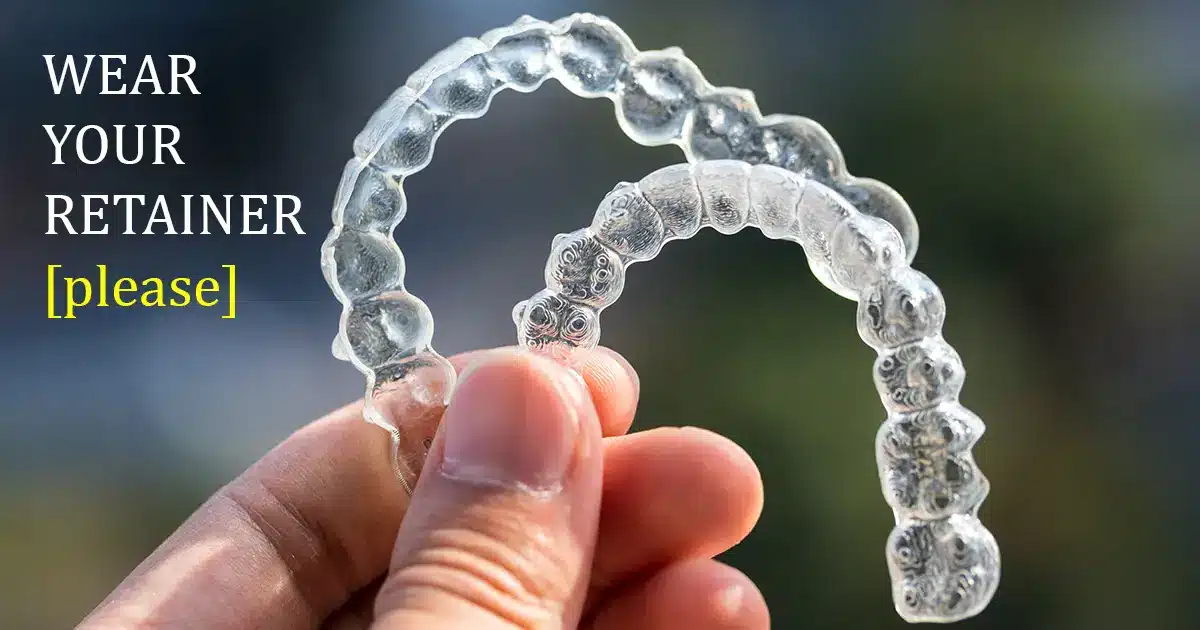So Here’s the Deal on Invisalign in Wheaton
Invisalign has revolutionized orthodontic treatment, offering a discreet and convenient way to straighten your teeth. However, the journey to a beautifully aligned smile doesn’t end when you complete your Invisalign Treatment in Wheaton. One crucial step that often gets overlooked is wearing a retainer. In this blog post, we’ll explore what happens if you stop wearing your retainer after Invisalign and why it’s essential to follow the recommendations of your Wheaton Dentist Dr. Joshi.
Understanding the Role of Retainers
After your Invisalign treatment, your teeth are in a new and improved position. However, they haven’t fully settled into their new locations yet. Retainers are a critical part of the post-treatment process, and they serve several essential purposes:
1. Maintaining Alignment: Retainers help preserve the alignment achieved during your Invisalign treatment. Teeth have a natural tendency to shift back to their original positions, and retainers prevent this relapse.
2. Bone and Tissue Adaptation: Your jawbone and gum tissue need time to adapt to the new position of your teeth. Retainers provide stability during this period, allowing these structures to solidify around your newly aligned teeth.
3. Preventing Overcrowding: Without a retainer, your teeth may gradually shift, leading to overcrowding or spacing issues, which can undo the results of your Invisalign treatment.
Consequences of Not Wearing Your Retainer
Now, let’s delve into what can happen if you neglect to wear your retainer after Invisalign:
1. Teeth Shifting: The most immediate consequence is that your teeth will start to shift back toward their original positions. This can result in misalignment, which may require additional orthodontic treatment to correct.
2. Overcrowding: Teeth that were once beautifully aligned can become overcrowded, leading to aesthetic concerns and potential discomfort.
3. Spacing Issues: Gaps between teeth may reappear, which can be both visually unappealing and functionally problematic.
4. Bite Problems: Misalignment can also affect your bite, leading to issues like overbites, underbites, or crossbites.
5. Pain and Discomfort: Shifting teeth can cause pain and discomfort as they move into less favorable positions. This discomfort can affect your ability to chew and speak comfortably.
6. Additional Treatment: Correcting the relapse caused by not wearing a retainer may necessitate further orthodontic treatment, which can be time-consuming and costly.
The Importance of Retainer Compliance
To avoid the potential consequences of not wearing your retainer, it’s crucial to follow your orthodontist’s recommendations diligently:
1. Wear Your Retainer as Directed: Your orthodontist will provide specific instructions on how often to wear your retainer. Follow these guidelines closely, especially in the initial post-Invisalign period.
2. Regular Maintenance: Clean your retainer as recommended by your orthodontist to prevent bacteria buildup and ensure it remains effective.
3. Consistent Follow-Up: Attend all scheduled follow-up appointments with your orthodontist to monitor your progress and make any necessary adjustments to your treatment plan.
4. Replacement if Needed: If your retainer becomes damaged or loses its effectiveness, seek a replacement promptly.
Dr. Joshi’s Conclusion on Invisalign and Retainers
Completing Invisalign treatment is a significant accomplishment on your journey to a straighter smile, but it’s essential to recognize that the process doesn’t end there. Wearing your retainer as directed by your orthodontist is crucial to maintaining the results and preventing relapse. Neglecting to wear your retainer can lead to shifting teeth, misalignment, and other dental issues, potentially requiring further treatment.
To enjoy the benefits of your beautifully aligned smile for years to come, commit to retainer compliance and work closely with your orthodontic team to ensure your results stand the test of time. Remember, your retainer is your smile’s best friend after Invisalign.

